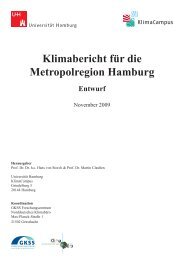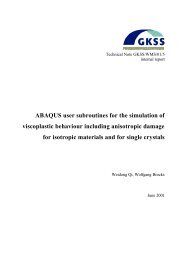Dynamics and Vulnerability of Delta Systems - loicz
Dynamics and Vulnerability of Delta Systems - loicz
Dynamics and Vulnerability of Delta Systems - loicz
You also want an ePaper? Increase the reach of your titles
YUMPU automatically turns print PDFs into web optimized ePapers that Google loves.
CS3: Subsidence <strong>of</strong> the Po River <strong>Delta</strong><br />
Albert Kettner<br />
<strong>Delta</strong>s are almost always prone to subsidence <strong>and</strong> the Po delta is no exception. Tectonics, sediment<br />
loading <strong>and</strong> sediment compaction are the main components driving natural subsidence rates for the<br />
Po <strong>Delta</strong>, which is only partly compensated by post-glacial rebound (Carminati & Martinelli 2002).<br />
The net natural subsidence rate for the Po <strong>Delta</strong> is estimated to be ~ 2-4mm/y (Simeoni et al. 2007).<br />
However, observed subsidence rates have been significantly higher since the 1950s. Anthropogenic<br />
factors like groundwater extraction accelerated as the area became more populated, but natural gas<br />
mining was central to increasing subsidence rates to 40-60 mm/y on average in the late 1950s, early<br />
1960s (Fig. CS3.1a). Gas extraction in the Po <strong>Delta</strong> stopped at the end <strong>of</strong> the 1970s, which almost<br />
instantly decreased the subsidence rate to 10-20mm/yr (Fig. CS3.1b). It took till the 1990s to slow<br />
subsidence to its natural rate (Bondesan et al. 1995).<br />
Fig. CS3.1: Decreasing subsidence rates (A-C) <strong>of</strong> the Po <strong>Delta</strong>. A) Subsidence rates during active mining <strong>of</strong><br />
methane rich water (after Caputo et al. 1970), B) Recovered subsidence rates when most mining activity<br />
stopped (after Bondesan & Simeoni 1983), <strong>and</strong> C) Simulated natural subsidence rates (after Simeoni et al.<br />
2007).<br />
Over the same time, the dem<strong>and</strong> for sediment for building material increased with the rapidly growing<br />
population. Between 1958 <strong>and</strong> 1981, 90-95 x 10 6 m 3 <strong>of</strong> sediment was mined in the lower course <strong>of</strong><br />
the river (Simeoni et al. 2007). In addition there was significant sediment trapping in the upper drainage<br />
basin by dams <strong>and</strong> reservoirs. Elevated subsidence rates, decreasing sediment supply due to<br />
dam <strong>and</strong> reservoir interception, <strong>and</strong> sediment mining (Fig. CS3.2) caused major delta erosion after<br />
the 1950s.<br />
Fig. CS3.2: Sediment load decreased by a factor 2.9 in less than 60 years (after Syvitski & Kettner 2007).<br />
17





